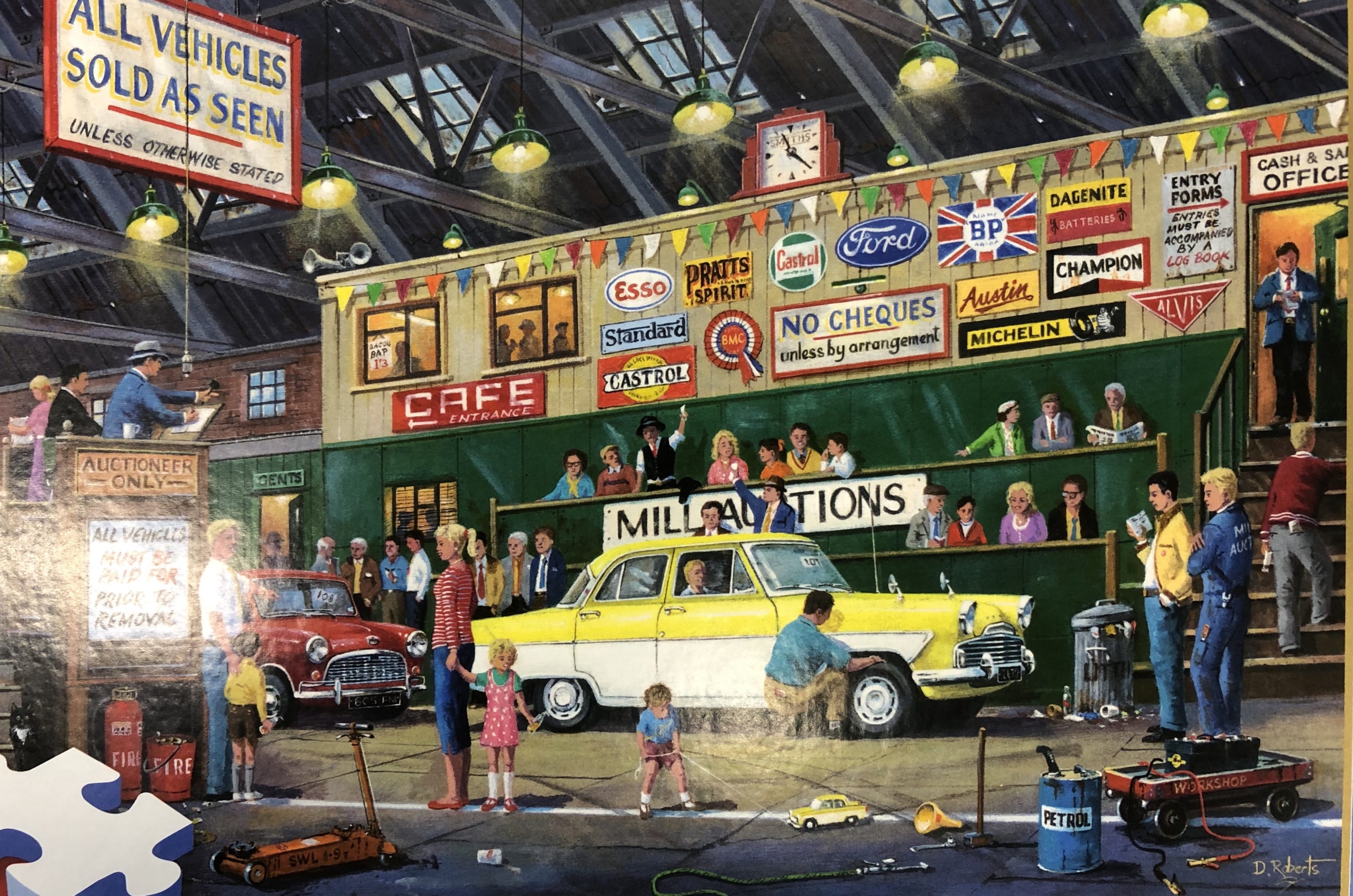The bigger picture
There’s a game I play with teams which I use as a talking point for working collaboratively. It needs no more than 12 – 15 people, and involves three brown paper bags each containing jigsaw puzzle pieces.
I get the group to split into three teams and give them each a bag.
I then give them the rules of the game:
- Each team has the same puzzle
- Solve the puzzle as fast as you can
- There are no further instructions
Within minutes of the team opening their bags and taking the usual jigsaw solving strategies, they begin to realise that they might not have all the pieces. They often confirm this by hunting out the corners and realise some are missing.
“Where are the other corners?”, they ask each other. Sometimes someone from one team will ask one of the other teams if they have all their corners. The answer comes back ‘no’.
They may try to puzzle this weird puzzle out further, not wanting to be the first team to give up. They might even cast an eye at me and say “is this a trick?”. I assure them it’s no trick, and point to instruction 1: “Each team has the same puzzle”.
They’ll continue to ruminate on this, shuffling pieces around in front of them. The teams often don’t look over at each others puzzle because they still think they’re competing at this point.
And then suddenly something sparks and someone will realise that they actually do all have the same puzzle, and it’s been split into three bags!
Then the real magic starts to happen, as the three teams reform so they can start to work together to solve the problem. They’ll move around so that they can easily talk to each other, shifting their puzzle pieces into the centre, and start to delegate work by dividing up areas of the puzzle so they can solve it more quickly.
You might be asking, if they’re all solving the same puzzle, why did I split it into three and ask them to work as separate teams in the first place?
Well, because we, as their leaders, ask them to do this all the time. We’ve learnt that small teams are more effective; long-lived, family unit sized teams with all the skills amongst them to do their job, more easily develop the cohesiveness which enables them to smash-it-out-of-the-park.
That for the most part is fine and dandy when we’re asking them to solve problems in discrete areas. However, more often than not, the teams will need to either change something in another team’s area, or find out that they’re actually working on a much bigger jigsaw than they imagined. A jigsaw that we’ve tried to break up for them, but without giving them either the heads-up or the bigger picture.
We do this because we believe it will speed up that team if they only focus on their part of the puzzle, but this never works well on edges where the parts start to interconnect.
And that’s the one thing that stands out for me the most, when I play the jigsaw game with groups: NO-ONE EVER ASKS ME FOR THE PICTURE ON THE FRONT OF THE BOX!
Why is that?!
When I play the game with groups, I include this observation and question as part of the debrief.
The one thing that seems to be common in the ensuing conversations, is that teams don’t think to ask for it because it’s not something they’re usually given, not in full at least.
They’re used to being briefed, and then breaking down the work and dividing it up amongst them. That briefing is often on a need to know basis, i.e. we give the team what they need to know, but it often only covers their part of the jigsaw puzzle, not the complete picture.
To make it work well, we should always give teams the wider context. And as with the jigsaw box picture, our picture has to be something the teams can refer back to often. They’ll complete one small part and then be looking for the next pieces that fit with it. Sometimes they’re adding those pieces themselves, other times those of another team.
As they progress, the jigsaw begins to take shape, and we refer back to the picture to make sure we’re putting it together in the right way.
Sometimes, we discover part way through it isn’t right and we shuffle the pieces around to make sure it fits.
One key difference in our jigsaw though, is the picture sometimes evolves and we’ll need to update it. It’s important when it does, it’s communicated to all the teams involved so they can adapt their part.
So how do we get better at holding the bigger picture for our teams?
My challenge to us is that we start to visualise what we’re trying to do. One way to do this is take over a wall, and put everything up that you’re thinking about / pulling together / already doing.
Each team can clearly see their part and how their part fits in with others.
This isn’t about tracking, or status, it’s about understanding how the picture we have in mind is taking shape.
